You want to read about the best plants for Chameleons. In this article, I feature the 40 best choices including pictures.
What are Chameleons?
Chameleons are mostly found in dry places like Africa, but some are also in Asia, the Middle East, and Europe.
They are known as the ‘lion of the earth.’ They change their color depending on the atmosphere.
The dark color helps them in absorbing heat. Mostly they are of green color and like to stay in plants.
Chameleons that are found in the desert are brown. They have popped-out eyes that assist them in simultaneously seeing in both directions.
For Chameleons, few plants help them stay alive, as some plants can irritate the skin and are not safe if ingested.
Large plants cover chameleons and help them hide when they feel threatened.
We have enlisted the 40 best plants for your Chameleon to help you find an enclosure.
40 Best Plants for Chameleons:
- Golden Pothos
- Grape Ivy
- Wandering Jew
- Boston Fern
- Ficus Benjamina
- Dragon tree
- Parlor palm
- Areca palm
- Schefflera tree
- Corn Plant
- Rubber Plant
- Ti Plant
- Aspidistra plant
- Hibiscus
- Yucca Plant
- Swiss Cheese plant
- Japanese Aralia
- Bromeliad
- Passionflower
- Gardenia
- Geraniums
- Wax Begonia
- Easter Cactus
- Petunias
- Moth Orchids
- Jasmine
- Prayer plant
- Polka dot
- African daisy
- Spider plant
- Argyraeus
- Philodendrons
- English Ivy
- Crabapple
- Dracaena Compacta
- Bridal Veil
- Chamomile
- Chickweed
- Emerald ripple
- Firethorn

Table of Contents
40 Best Plants for Chameleons
1. Golden Pothos
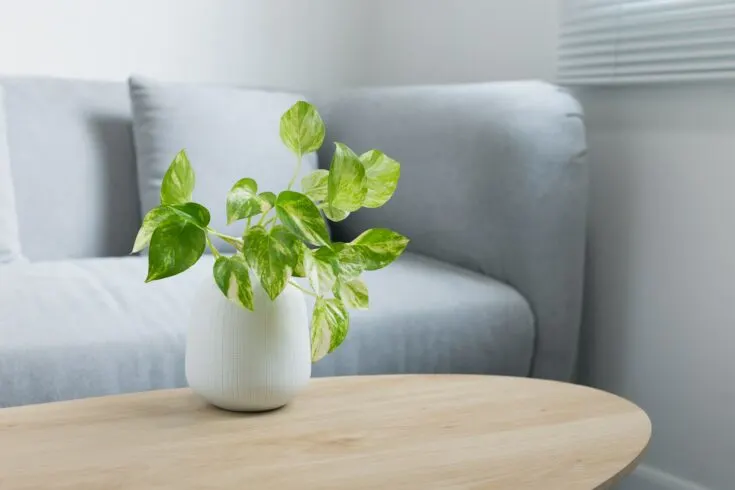
Golden Pothos is also known as devil’s Ivy. These plants are not easy to kill.
If your Chameleon likes to eat leaves, we bet this is the best plant to keep, as this plant grows quickly. Golden Pathos are hanging plants.
The nature of this plant allows the Chameleon to clamber from one nook to another.
The binomial nomenclature of Golden pathos includes:
- Scientific name: Epipremnum aureum
- Family: Arums
- Temperature: 70° – 90°F (21.11° – 32.22°C)
- Soil: well-draining pot soil with perlite or coco coir
- pH: 6.1 – 6.5
- Environment: high humidity above 50°F
- Humidity: 50% – 70%
2. Grape Ivy
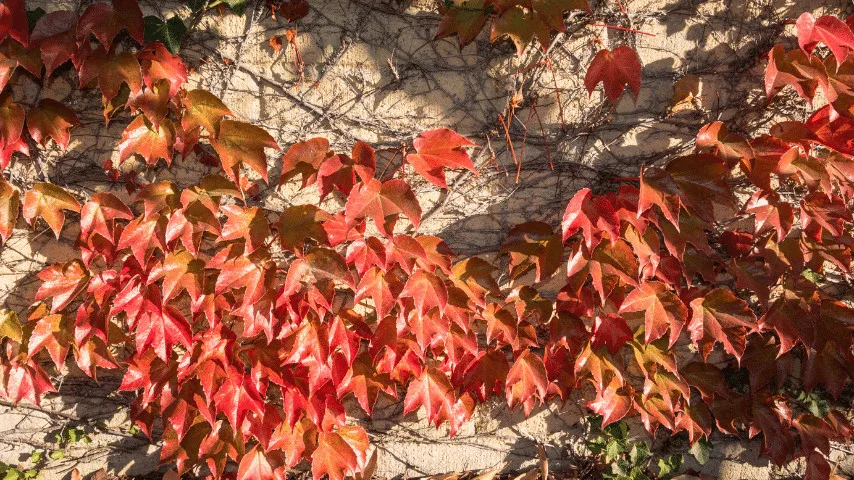
For your Chameleon’s enclosure, the grape Ivy is another great choice. It represents leaves in the hanging structure, just like the ones on the grape tree.
This vine plant is not too heavy like golden pathos but provides good cloth.
The binomial nomenclature of Grape Ivy includes:
- Scientific name: Cissus rhombifolia
- Family: Vitaceae
- Temperature: 68° – 82°F (20° – 28°C)
- Soil: well-draining soil with Styrofoam and perlite
- pH: 5.5 – 6.2
- Environment: Moderate sunlight above 50°F
- Humidity: 40% – 60%
3. Wandering Jew

With a purple touch on its leaves, this splashing plant is a wonderful increment for your chameleon enclosure.
This plant can grow in any specific environment and adapt to new changes.
Wandering Jew is also known as the Inch plant due to its leaves spacing an inch apart.
The binomial nomenclature of wandering Jew includes:
- Scientific name: Tradescantia zebrina
- Family: Spiderworts
- Temperature: 50° – 80°F (10° – 27°C)
- Soil: moist but not soggy
- pH: 5.0 – 6.0
- Environment: warm temperature above 45°F
- Humidity: 40% – 60%
4. Boston Fern
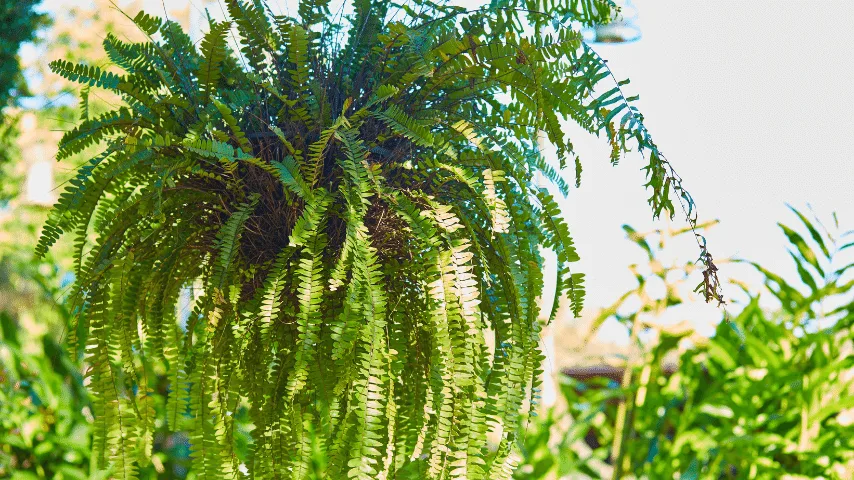
If your Chameleon loves to hide, we bet Boston Fern is a good plant for it.
Boston Fern leaves are not that long but provide a great dome for the Chameleon.
It is also one of the hanging plants and has feather-like leaves that aid in storing water.
The binomial nomenclature of Boston Fern includes:
- Scientific name: Nephrolepis exaltata
- Family: Nephrolepidaceae
- Temperature: 65° – 95°F (18.33° – 35°C)
- Soil: moist, well-drained
- pH: 6.0 – 6.5
- Environment: Indirect sunlight. temperature above 45°F
- Humidity: above 50%
5. Ficus Benjamina
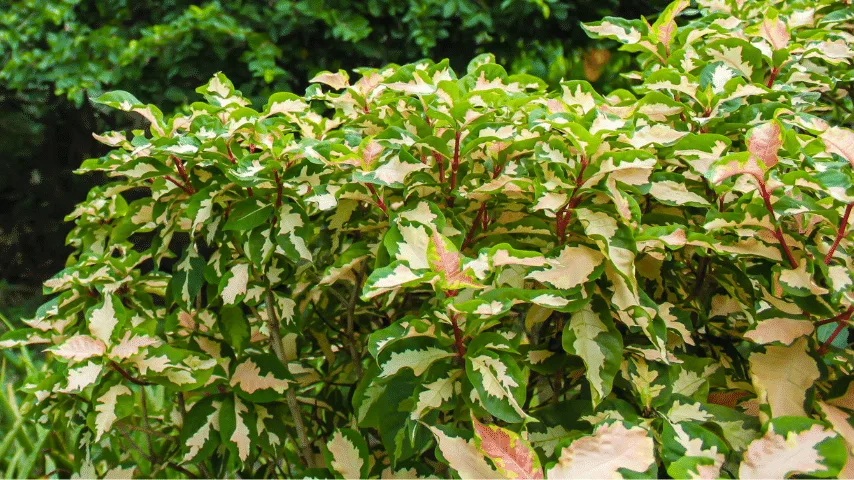
If you love taking care of plants then this plant is for you. You need to decide your relationship with this plant as it sheds many leaves one by one.
Another name for this plant is weeping fig or Benjamin fig. Ficus Benjamina is a flowering plant, and it originated plant from Bangkok.
The binomial nomenclature of Fiscus Benjamina includes:
- Scientific name: Ficus Benjamina
- Family: Moraceae
- Temperature: 65° – 85°F (18.33° – 29.44°C)
- Soil: moist
- pH: 6.5 – 7
- Environment: Bright light and moderate water
- Humidity: up to 60%
6. Dragon tree
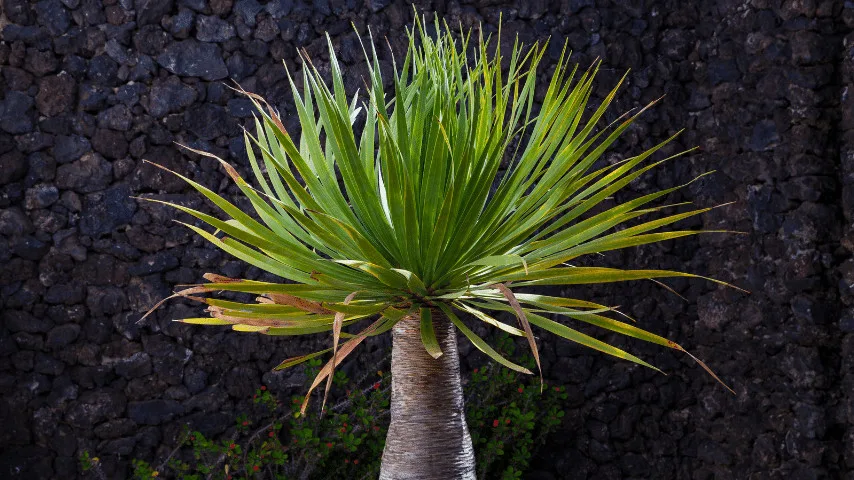
If you are not interested in taking care of the plants but want to give your Chameleon a green habitat.
It grows slowly and looks like a small version of the palm tree. This plant provides cover to hide and a thick trunk to lay vertically for chameleons.
The binomial nomenclature of the Dragon tree includes:
- Scientific name: Dracaena Draco
- Family: Asparagus
- Temperature: 70° – 80°F (21.11° – 26.667°C)
- Soil: well-drained potting mix with peat moss
- pH: 6.0 – 6.5
- Environment: higher humid environment
- Humidity: high
7. Parlor palm
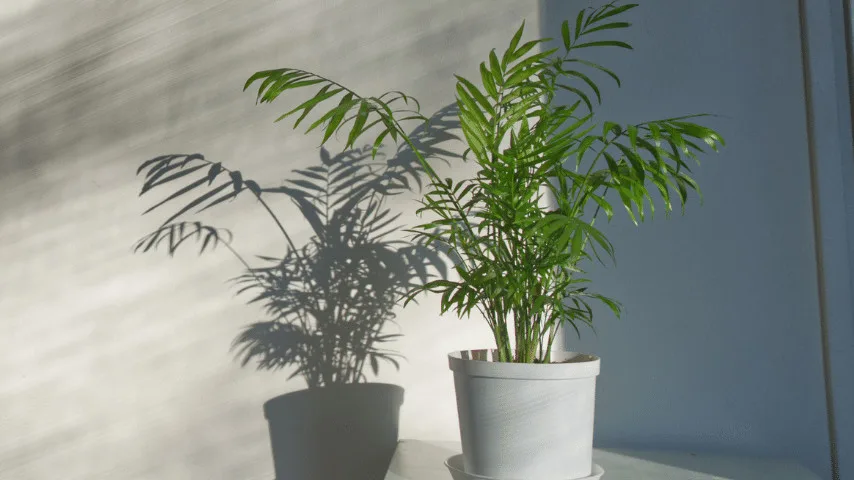
If you have an apartment with less light, this plant can help you with your chameleon enclosure.
Parlor palms are great indoor plants as they are not hungry for plant food.
If you are thinking of buying one for your enclosure, buy an established one as parlor palm grows slowly.
The binomial nomenclature of Parlor palm includes:
- Scientific name: chamaedorea elegans
- Family: palms
- Temperature: 65° – 75°F (18.33° – 24°C)
- Soil: well-drained soil
- pH: 5 – 7.5
- Environment: low to moderate sunlight
- Humidity: high
8. Areca Palm
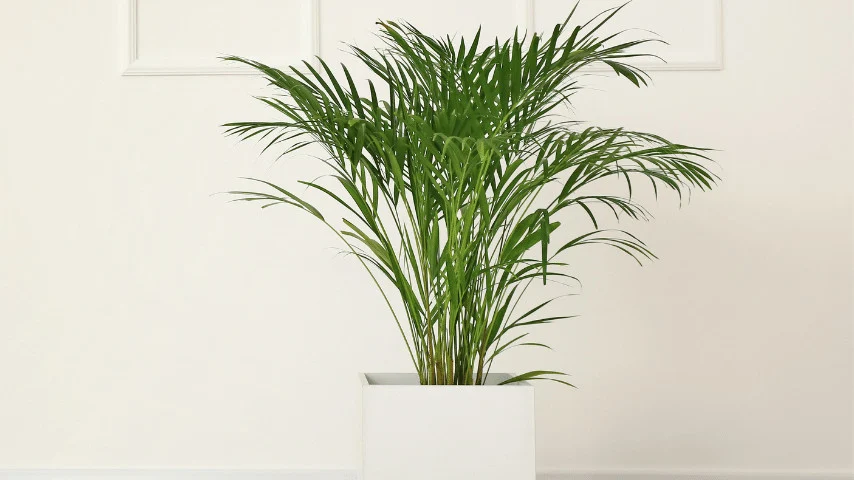
Areca palm or butterfly palm is similar to the Parlor palm.
This plant can provide a good binding for your enclosure and provide a thick trunk for the Chameleon to climb.
It needs less fertilization and has a dense structure. Unlikely parlor palms, they need more light and loose soil to grow.
The binomial nomenclature of Areca Palm includes:
- Scientific name: Dypsis lutescens
- Family: Arecaceae
- Temperature: 65° – 75°F (18° – 24°C)
- Soil: loose sand with peat moss
- pH: 6.1- 6.5
- Environment: bright light and high humidity
- Humidity: 50-70%
9. Schefflera tree

This plant is good for tropical regions; it can be kept inside an enclosure.
Schefflera plant has shiny green leaves, and they originate in an umbrella-like structure from the stem and are also called dwarf umbrella trees.
These plants are hungry and thus require fertilizers bi-weekly.
The binomial nomenclature of the Schefflera plant includes:
- Scientific name: Schefflera
- Family: Araliaceae
- Temperature: 60° – 75°F (16° – 24°C)
- Soil: well-drained and loose soil
- pH: 6.5 – 7
- Environment: warm, humid
- Humidity: moderate
10. Corn plant
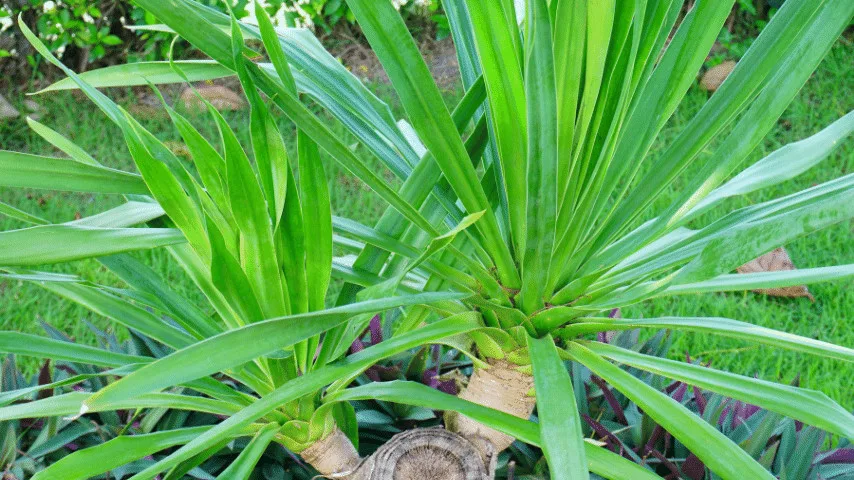
If you are looking for an indoor enclosure but don’t want to pay attention to it, the corn plant is your right fit.
This plant looks like corn having a dense stem. This plant has a similar look to those seen in a cornfield.
You don’t need to water them extra as they like to stay in moist soil but not soggy.
The binomial nomenclature of the Corn plant includes
- Scientific name: Dracaena fragrans
- Family: Grasses
- Temperature: 32° – 112°F (0° – 45°C)
- Soil: well-drained, loamy soil
- pH: 5.6- 6.2
- Environment: low light and moderate indirect sunlight
- Humidity: 40%-50%
11. Rubber plant
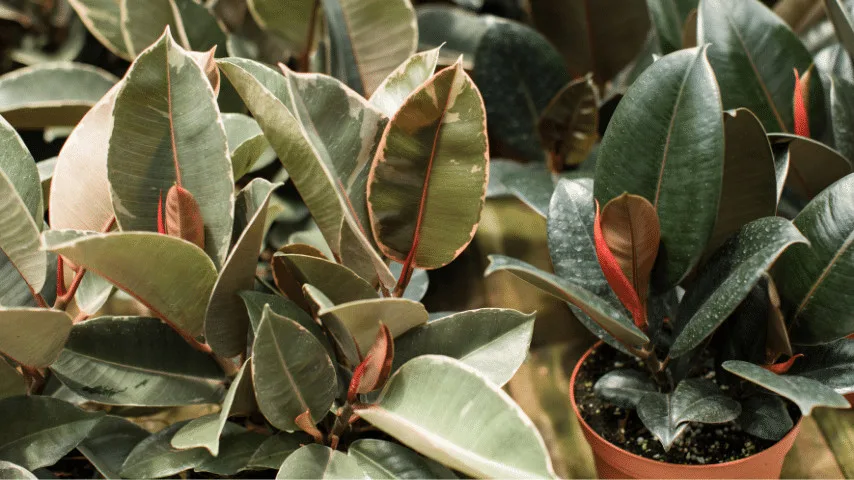
Thick, green greasy leaves are good to keep inside the enclosure. This plant grows best inside your household and outside in the garden as well.
The sags of rubber plants develop rubber on them. It doesn’t need a great amount of water, just sprinkle water when the soil is no longer wet.
The binomial nomenclature of Rubber plant includes:
- Scientific name: Ficus elastica
- Family: Mulberry
- Temperature: 60° – 75°F (16° – 24°C)
- Soil: well-drained and aerated soil
- pH: 5.5 – 7.0
- Environment: bright light with warm temperature
- Humidity: 40%- 50%
12. Ti plant
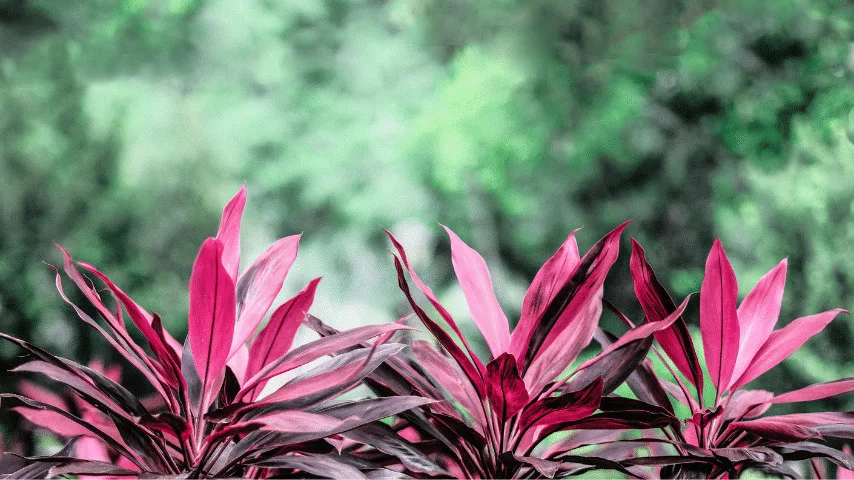
We suggest the Ti plant if you think of adding some color to your chameleon habitat. These plants are good for adding variation to your enclosure.
They are of pink color and prefer heat. Try to keep them in front of indirect sunlight and away from the cold spot.
The binomial nomenclature of the Ti plant includes:
- Scientific name: Cordyline Fruticosa
- Family: Asparagaceae
- Temperature: 65° – 95°F (18.33° – 35°C)
- Soil: organic, fertile, and deep soil
- pH: 5.5- 6.5
- Environment: light to moderate shade
- Humidity: 50%- 60%
13. Aspidistra plant
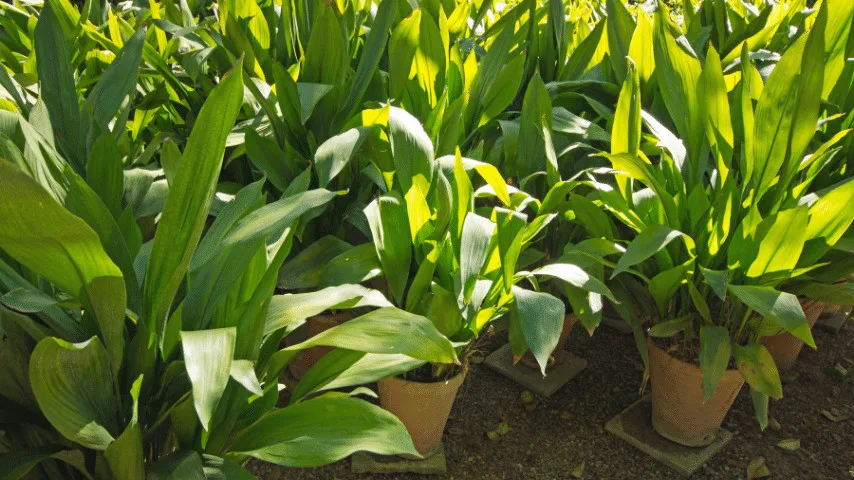
If you have low light conditions and at times have uncertain conditions, including cold, heat, and dust, then this plant is a good choice for you.
Aspidistra plants can grow in various situations. No matter how terrible you are with plants,
this plant is all you need for your enclosure as it will not demand much attention.
The binomial nomenclature of aspidistra plant includes:
- Scientific name: Aspidistra
- Family: Asparagaceae
- Temperature: 45° – 85°F (7.22° – 29°C)
- Soil: Not too dry, not too moist
- pH: 5.5- 6.5
- Environment: A bright place away from the sun.
- Humidity: prefer humidity. But no requirement
14. Hibiscus
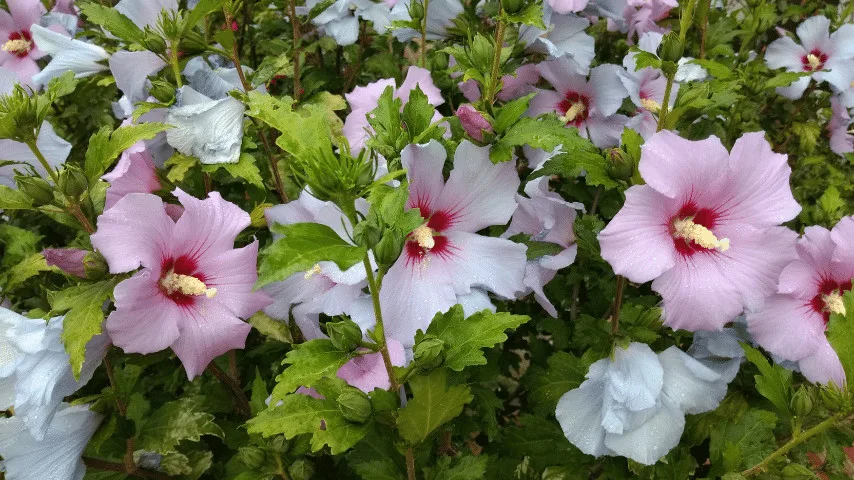
Chameleon eats leaves and, at times, flowers too. Hibiscus is a great flowering plant for your Chameleon, considering the need for vitamins.
This plant not only has colors and flowers but provides Vitamin C for your Chameleon. These plants are hard to maintain,
so it requires your attention and frequent maintenance. Well-drained soil and bi-weekly fertilizers are good ways to keep this plant fresh.
The binomial nomenclature of Hibiscus includes:
- Scientific name: Hibiscus
- Family: Malvaceae
- Temperature: 60° – 85°F (16° – 29°C)
- Soil: well-drained moist soil.
- pH: 6.5 – 6.8
- Environment: Prefer bright sun
- Humidity: Moderate to high
15. Yucca plant
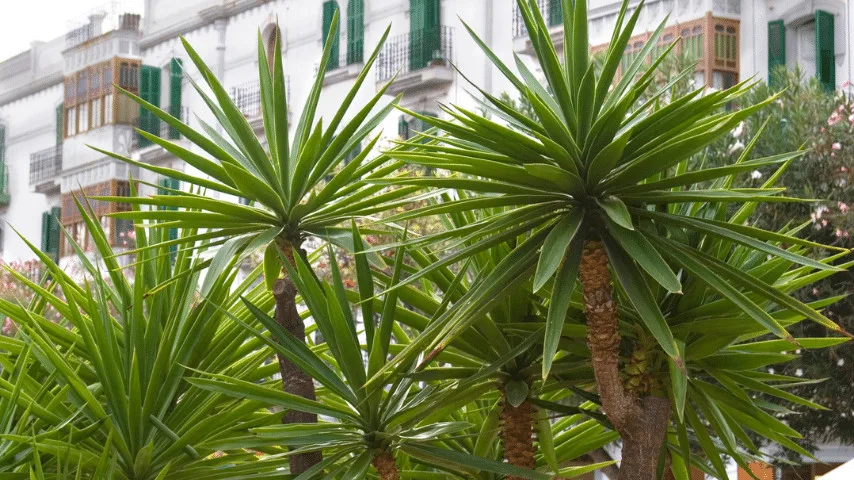
If you are not sure about buying a dragon plant or a corn plant, then you can go for a Yucca plant. It is a combined specie of dragon and corn plants.
The plant doesn’t require much maintenance as they don’t need direct exposure to the sun and thrive well with little water. However, this plant grows quite slowly, keep that in your mind.
The binomial nomenclature of the Yucca plant includes:
- Scientific name: Yucca
- Family: Asparagaceae
- Temperature: 65° – 85°F (18° – 29°C)
- Soil: well-drained soil
- pH: above 6.0
- Environment: Bright sun and less humid
- Humidity: 10% or more
16. Swiss Cheese plant
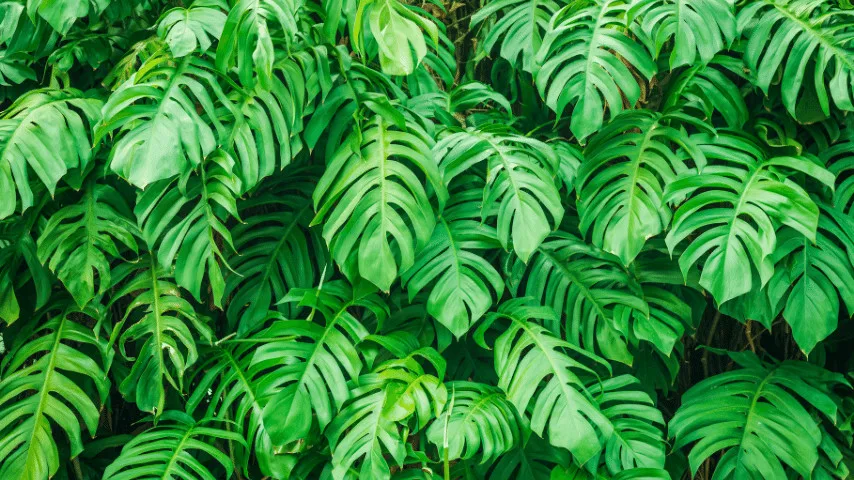
Split leaf philodendron is another name for the Swiss-cheese plant.
It is a classic piece to use as a house plant with long shiny leaves and requires less maintenance, thus acting as a good companion for your Chameleon.
The binomial nomenclature of the swiss cheese plant includes
- Scientific name: monstera adansonii
- Family: Araceae
- Temperature: 60° – 85°F (16° – 29°C)
- Soil: peat-based potting mix to trap water
- pH: 5.5-7.0
- Environment: warm and humid
- Humidity: above 50%
17. Japanese Aralia
This plant is one of the favorites of chameleons as this has long leaves and is hardy and easy to grow.
You don’t need to water it regularly but make sure the soil is moist and isn`t completely dry.
The binomial nomenclature of Japanese Aralia includes:
- Scientific name: Fatsia Japonica
- Family: Araliaceae
- Temperature: 60° – 70°F (16 ° – 21.11°C)
- Soil: well-drained, moist soil
- pH: neutral
- Environment: High humidity and above 50°F
- Humidity: at least 45%
18. Bromeliad
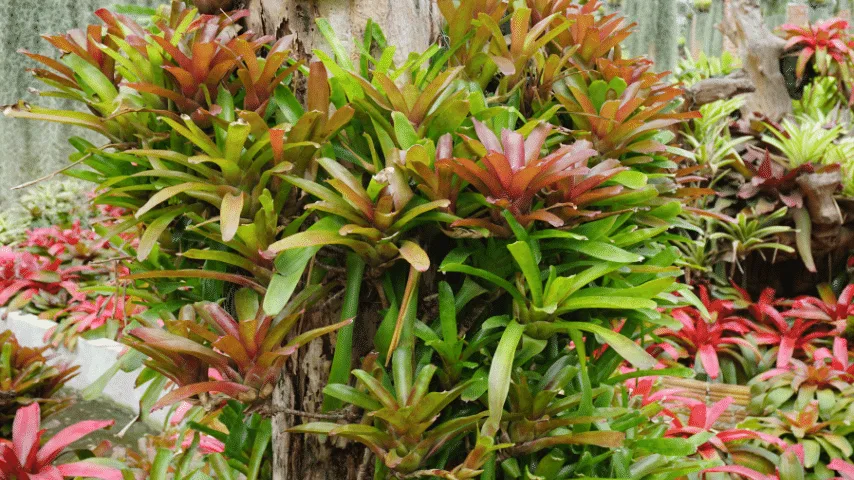
Bromeliad is a flowering plant. It is good for the enclosure as
it provides shelter and space to the Chameleon and flowers to enhance its appearance.
The binomial nomenclature of bromeliad includes:
- Scientific name: Bromeliaceae
- Family: bromeliads
- Temperature: 65° – 80°F (15.5° – 26.7°C)
- Soil: well-drained soil that holds moisture
- pH: 4.0-7.0
- Environment: High humidity and above 50°F
- Humidity: 40% – 60%
19. Passionflower

Passionflower is a flowering plant and is totally Chameleon friendly.
While choosing this plant for your enclosure, remember that they grow remarkably fast and require some attention.
The binomial nomenclature of Passionflower includes:
- Scientific name: Passiflora
- Family: Passifloraceae
- Temperature: 55° – 65°F (13° – 18°C)
- Soil: well-drained and moist
- pH: 6.1 – 7.5
- Environment: High humidity and temperate climate
- Humidity: 60%-85%
20. Gardenia
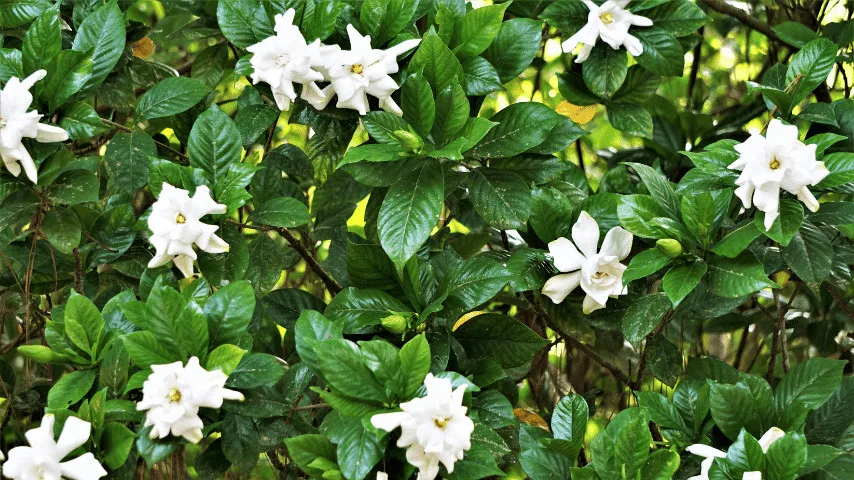
A plant that works well in the humidity and looks like Jasmine is Gardenia.
It is a good plant to use at the end of your enclosure where they can get cooling and indirect light.
Gardenia at the bottom of the enclosure will look great to decorate your enclosure with some plants.
The binomial nomenclature of Gardenia includes:
- Scientific name: Gardenia jasminoides
- Family: Rubiaceae
- Temperature: 60° – 70°F (16° – 21°C)
- Soil: well-drained and moist
- pH: 5.0- 6.5
- Environment: bright light and filtered shade
- Humidity: 50% – 70%
21. Geraniums
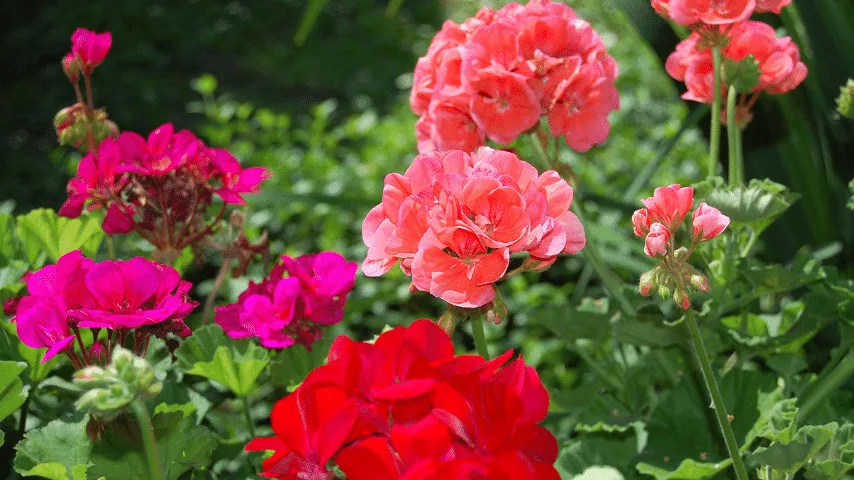
Adding variations is always a good idea. With green plants, some flowering plants will also look good.
For the Chameleon’s cage, the pink flowers of geraniums will look great. These plants are easy to look after.
You can put them in soaked soil and water once it dries.
The binomial nomenclature of geraniums includes:
- Scientific name: pelargonium
- Family: Geraniaceae
- Temperature: 65° – 75°F (18° – 24°C)
- Soil: loose and well-drained soil
- pH: 6.0 – 6.5
- Environment: humid and warm temperature with sunlight
- Humidity: 80%
22. Wax Begonia
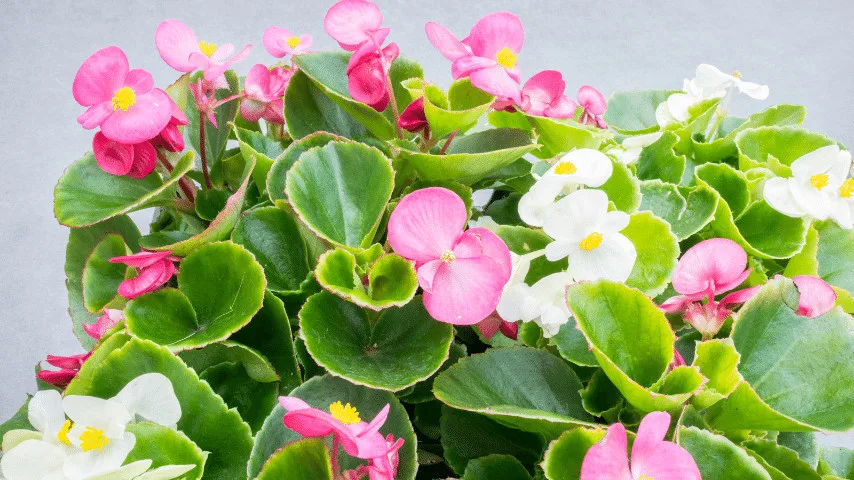
If you love decorating your enclosure, you should look for wax begonia. This plant has waxy-looking leaves and is easy to grow.
Wax begonia can grow up to two ft and need water along with bright sunlight.
The binomial nomenclature of wax begonia includes:
- Scientific name: begonia x semperflorens-cultorum
- Family: Begoniaceae
- Temperature: 60° – 70°F (16° – 21.11°C)
- Soil: Moist-well drained
- pH: 5.5 – 6.5
- Environment: High humidity and above 50°F
- Humidity: 40% – 60%
23. Easter Cactus
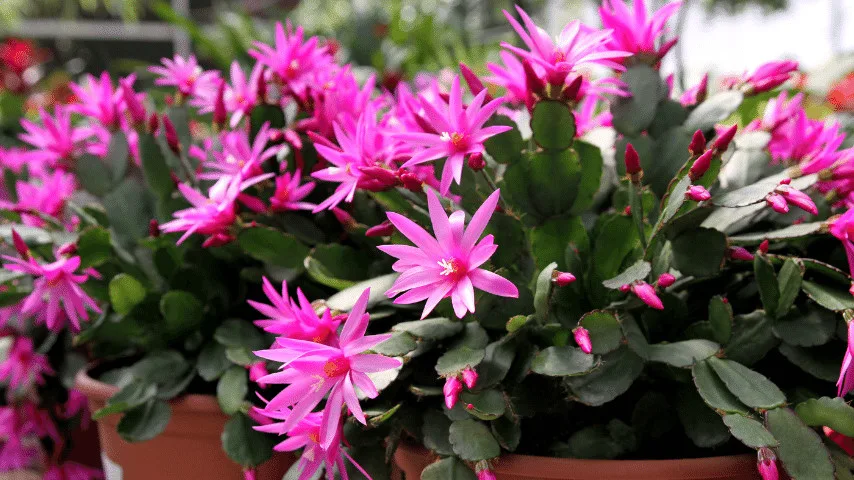
As the name specifies, this plant only grows around the Easter season.
It does look like cactus but doesn’t have pointy spikes to harm the Chameleon. It requires shaded areas with indirect sunlight to bloom.
The binomial nomenclature of Easter cactus includes:
- Scientific name: Schlumergera gaertneri
- Family: Cactaceae
- Temperature: 55° – 60°F (13° – 16°C)
- Soil: slow draining soil with peat moss
- pH: 6.0 – 6.5
- Environment: High humidity and moderate temperature
- Humidity: at least 60%
24. Petunias
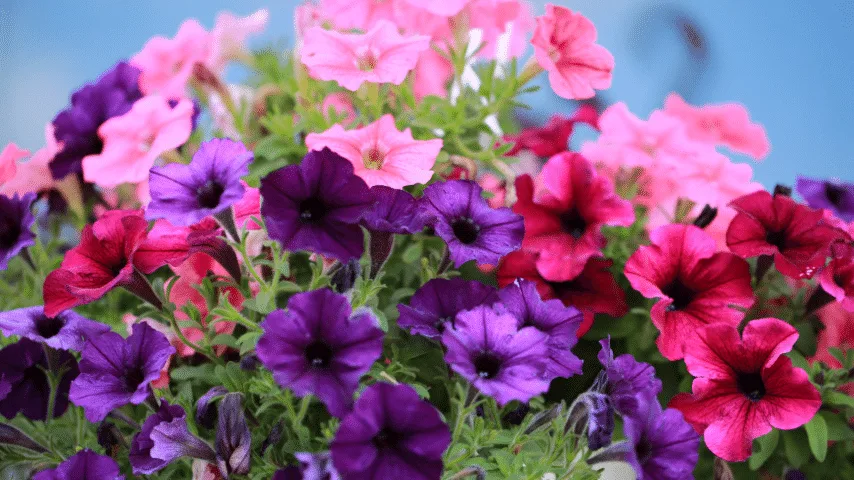
If you like a carpet of flowers and want one for your enclosure, petunias are the right choice.
This plant needs water every day and wants direct sunlight to grow.
The binomial nomenclature of petunias includes:
- Scientific name: petunia
- Family: Solanaceae
- Temperature: 57° – 75°F (14° – 24°C)
- Soil: fertile, well-drained, moist soil
- pH: 6.0- 7.0
- Environment: Prefer full sunlight and low humidity
- Humidity: Low humidity
25. Jasmine
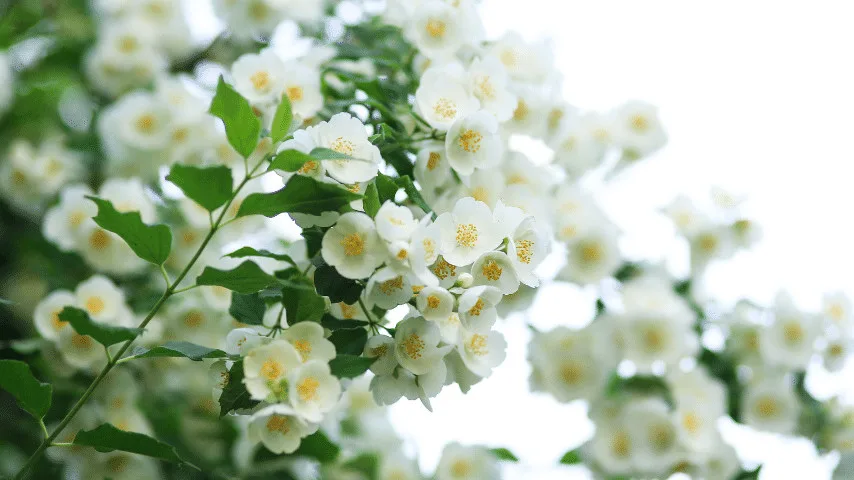
Your enclosure is the home for your Chameleon, and you should keep it pleasant and perk it up with fragrance.
Jasmine smells good and can survive up to 75°F. The white flowers will enhance the look of your enclosure while keeping it fresh and appealing to the eye.
The binomial nomenclature of Jasmine includes:
- Scientific name: Jasminum
- Family: Oleaceae
- Temperature: 60° – 75°F (16° – 21.11°C)
- Soil: well-drained, moist loamy soil
- pH: 6.1 – 6.5
- Environment: extra humidity with average sunlight
- Humidity: humid environment
26. Moth Orchids
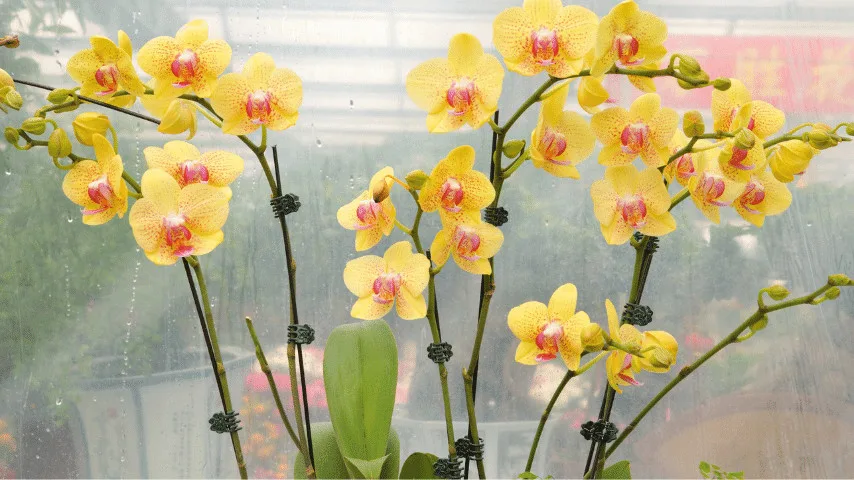
If you want a plant that grows throughout the year, Moth orchids are for you. They require minimum effort.
You don’t need to put them in water or leave them in direct sunlight; it will kill them.
The binomial nomenclature of Moth orchids includes:
- Scientific name: Phalaenopsis
- Family: Orchidaceae
- Temperature: 70° – 80°F (21.11° – 27°C)
- Soil: Moist- bark-like potting mix
- pH: acidic to neutral
- Environment: indirect sunlight and shady places
- Humidity: 50% – 80%
27. Prayer plant
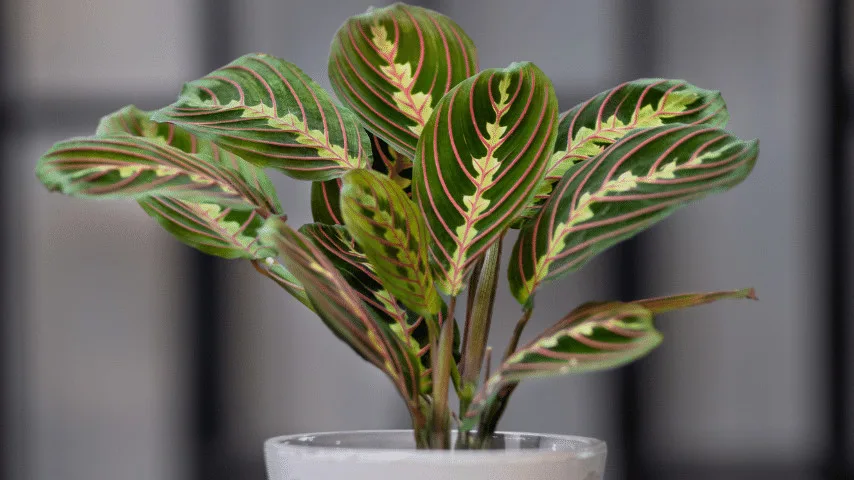
The prayer plant can survive in water, but it’s ideal not to keep it in water for a long period. It requires sunlight to grow properly.
But an excessive amount of both (Water & Sunlight) can cause the plant to die.
They originated from the rainforest parts of the earth. You can keep them with pebbles for increased humidity, which they love.
The binomial nomenclature of player plant includes:
- Scientific name: Maranta leuconeura
- Family: Marantaceae
- Temperature: 65° – 70°F (16° – 21.11°C)
- Soil: well-drained moist soil
- pH: 5.5– 6.0
- Environment: humid and bright indirect exposure to sunlight
- Humidity: around 60%
28. Polka dots
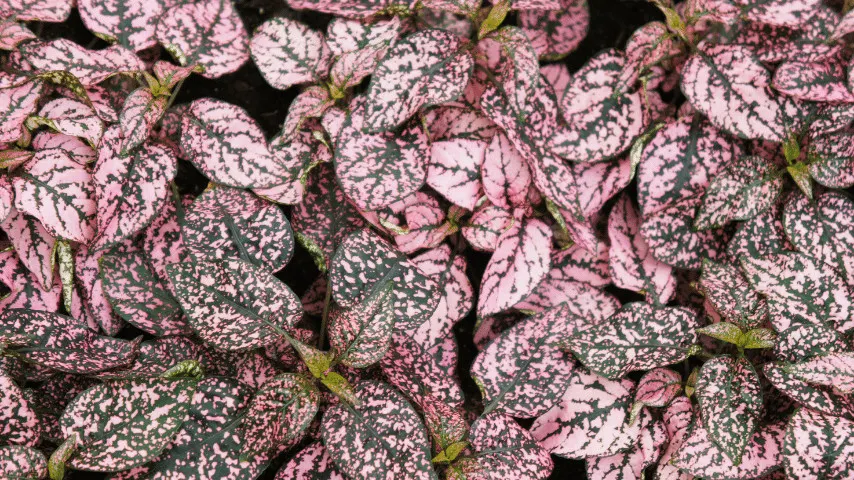
These plants have a unique pattern on them, depending on their different varieties. Direct and excessive sunlight can remove or alter their pattern.
They are not strong enough to hold many Chameleons but are good enough to provide shelter to your Chameleon.
The binomial nomenclature of polka dots includes:
- Scientific name: Hypoestes phyllostachya
- Family: Acanthaceae
- Temperature: 70° – 90°F (21.11° – 32.22°C)
- Soil: well-drained soil with compost material
- pH: 5.6. – 6.5
- Environment: moist air and temperature around 75F
- Humidity: relative humidity of 50%
29. African daisy
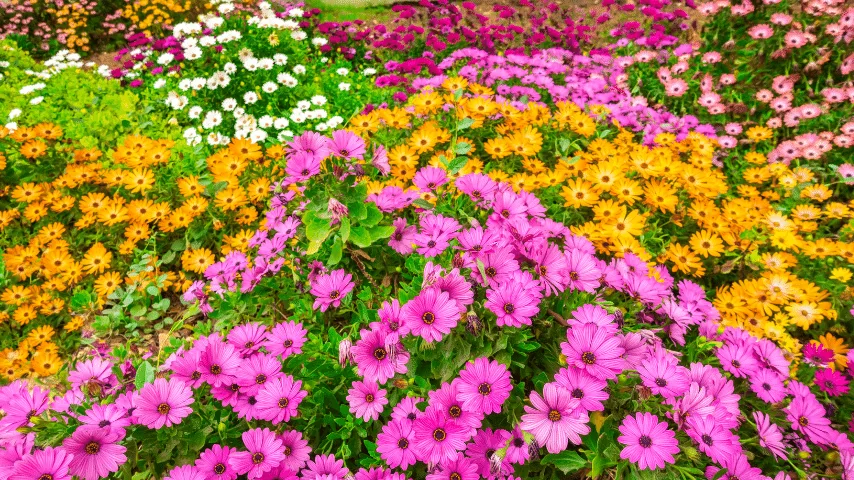
African daisies are of unique shapes and have colors on them. Like many other plants, this plant is a great addition to your chameleon enclosure.
They add colors to the chamber and require no hard work when it comes to maintenance.
- Scientific name: Osteospermum
- Family: daisy’s family
- Temperature: 64° – 68°F (18 ° – 20°C)
- Soil: draining pot mix.
- pH: 5– 5.5
- Environment: grow in full sun
- Humidity: medium
30. Spider plant
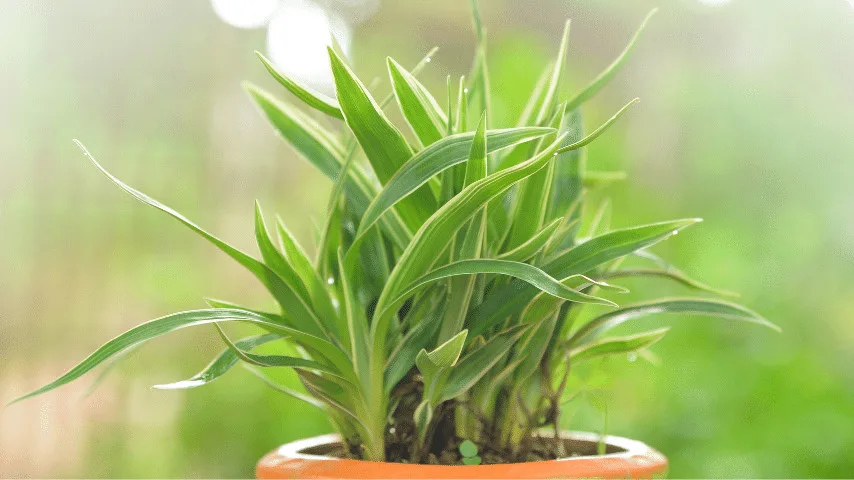
Spider plants can have variations in their coloration. They are good plants to keep inside the enclosure to fill the space.
They avoid direct exposure to sunlight as they cannot tolerate direct heat.
The binomial nomenclature of the Spider plant includes:
- Scientific name: Chlorophytum comosum
- Family: Asparagaceae
- Temperature: 70° – 90°F (21.11° – 32.22°C)
- Soil: Loamy, moist, and well-drained
- pH: 6.1 – 6.5
- Environment: low humidity
- Humidity: 40% – 60%
31. Argyraeus
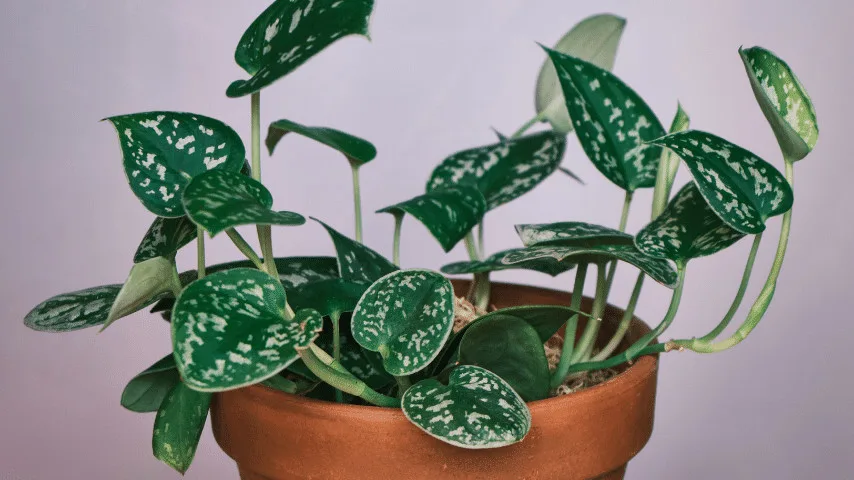
The enclosure is home to your Chameleon. It must have some variations in it. Apart from flowering plants and colorful plants,
Argyraeus provide heart-shaped leaves. This plant has various shapes and comes in different sizes, making it unique.
Its leaves are soft and lusterless to touch. These leaves are big and help the Chameleon hide when he feels threatened.
The binomial nomenclature of Argyraeus includes:
- Scientific name: Scindapsus pictus
- Family arum
- Temperature: 65° – 85°F (18° – 30°C)
- Soil: organic, well-draining
- pH: 5.1 – 6.5
- Environment: Plenty of bright, indirect sunlight
- Humidity: 40%- 50%
32. Philodendrons
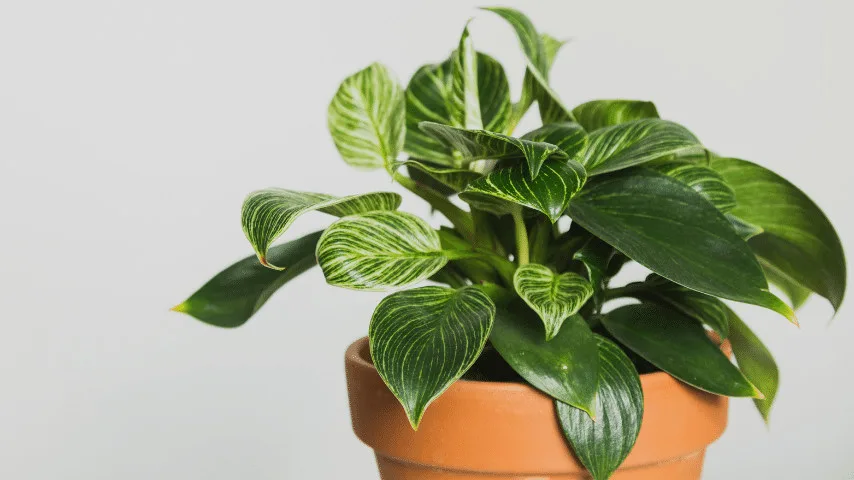
Philodendrons are great for your chameleon habitat. They are present throughout the year and have high adaptability to climate and environmental change.
They can grow inside your household and outside in the garden as well. Considering their temperature need, you can place it under the shade when they are outside.
The binomial nomenclature of Philodendrons includes:
- Scientific name: philodendron
- Family: Araceae
- Temperature: 65° – 85°F (18° – 30°C)
- Soil: aerated, well-drained soil
- pH: 5.0 – 6.0
- Environment: High humidity and medium light
- Humidity: 65% – 80%
33. English Ivy
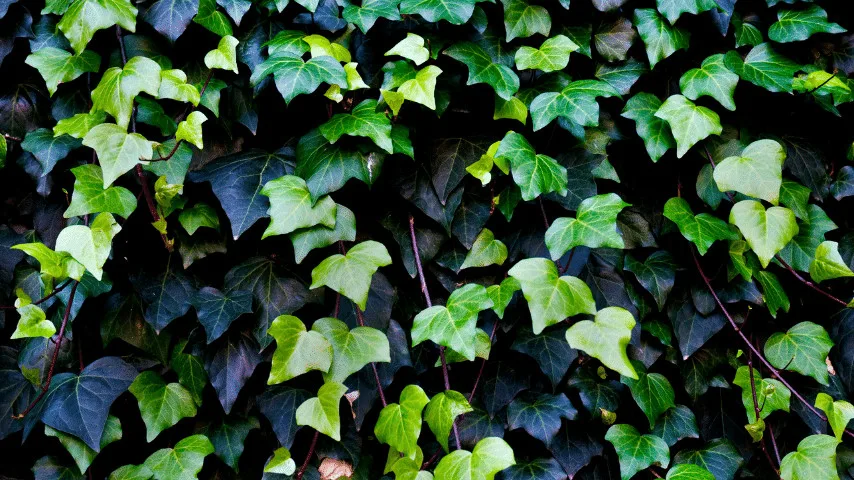
Ivy species are grown in homes and have many categories, English Ivy is one of the common species.
It comes in cream, black, yellow and grey colors. English Ivy is a great fit for your terrarium if you have low-light conditions as they don’t like bright light.
English Ivy is hungry for food, so you need to feed(using fertilizer) them frequently.
The binomial nomenclature of English Ivy includes:
- Scientific name: Hedera helix
- Family: Araliaceae
- Temperature: 70° – 90°F (21.11° – 32.22°C)
- Soil: well-drained soil
- pH: 5.5. – 6.5
- Environment: moderate to full shade
- humidity: relatively 40%
34. Crabapple
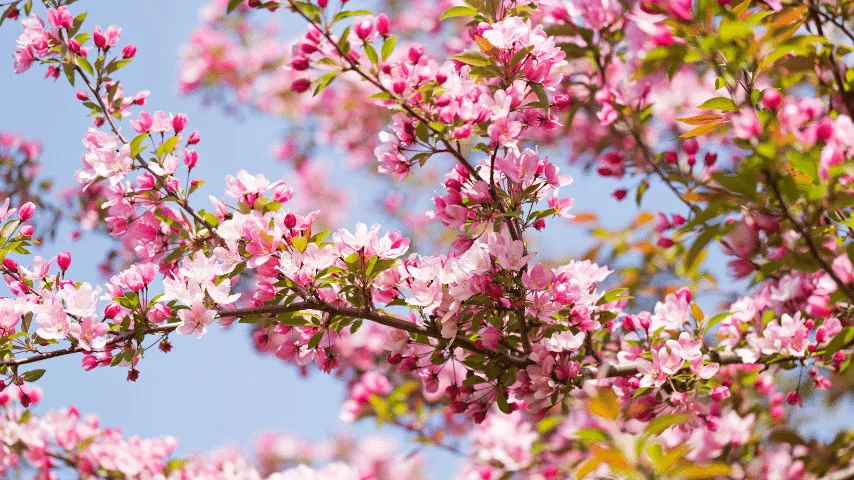
Helps in adding visual appeal to your enclosure while providing a great space for your Chameleon.
It has purplish-red leaves which turn dark green in the summer season.
The binomial nomenclature of Crabapple includes:
- Scientific name: malus
- Family: Rosaceae
- Temperature: 70° – 90°F (21.11° – 32.22°C)
- Soil: moist soil with well-drained
- pH: 5.0. – 6.5
- Environment: full to moderate sun
- humidity: above 60%
35. Dracena Compacta
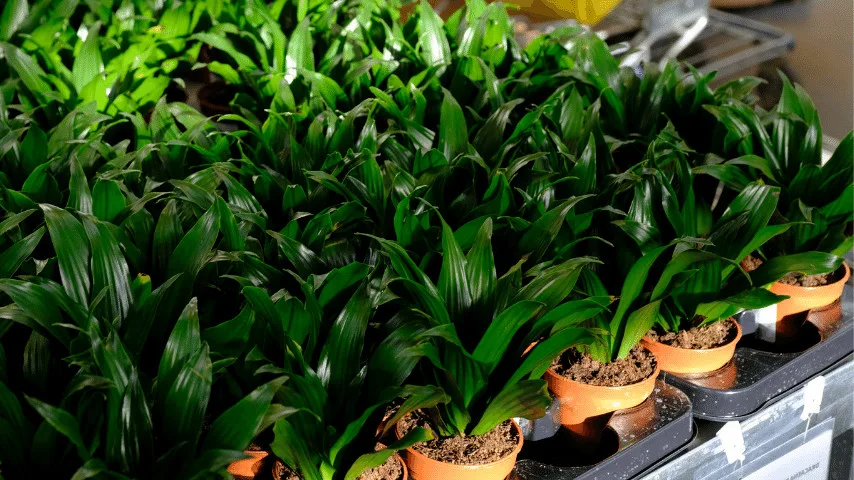
If you have a chameleon, you must have heard the name of Dracaena compacta. It is also well-known as the Compact Dragon tree.
For the Chameleon’s habitat, this is a great pick. It has green leaves, which are dark in color and provide thick packing.
If you want a tree, which is closed nested and is in a dark color, then the dragon tree is a must.
The binomial nomenclature of Dracena Compacta includes:
- Scientific name: Dracaena deremensis
- Family: Dracaenaceae
- Temperature: 60° – 75°F (16° – 21.11°C)
- Soil: organic and moist
- pH: 6.0-6.5
- Environment: humid and indirect light
- Humidity: 25%
36. Bridal veil

As the name suggests the plant’s shape, the bridal veil is a flowering plant. Also known for it is the Tahitian bridal veil.
It has dark green leaves, white leaves, and thin purple stems. You may store them in your Chameleon’s enclosure since it is safe.
With delicacy and color, this plant will provide shelter to your Chameleon.
The binomial nomenclature of Bridal Veil includes:
- Scientific name: Gibasis pellucida
- Family: Spiderwort
- Temperature: 50° – 70°F (10 ° – 21.11°C)
- Soil: high organic
- pH: 5.5 – 6.5
- Environment: warm temperatures and humid air.
- Humidity: moderately humid
37. Chamomile
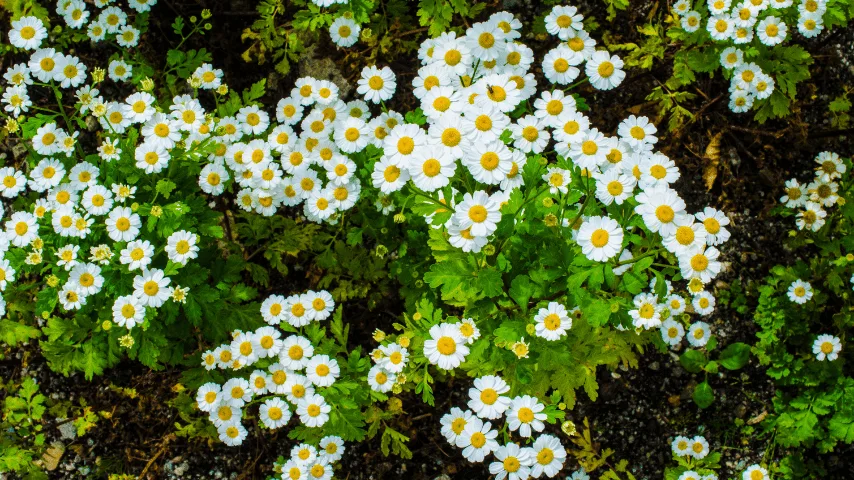
Your Chameleon also needs a well-decorated pretty space; what is better than growing herbs inside the enclosure,
which can serve as a shelter. It would be best if you grow Chamomile in indirect, bright sunlight.
The binomial nomenclature of Chamomile includes:
- Scientific name: Matricaria chamomilla
- Family: Asteraceae
- Temperature: 60° – 68°F (16° – 20°C)
- Soil: well-drained, sandy soils
- pH: 5.6-7.5
- Environment: Full sun and shade as well
- Humidity: excessive humid
38. Chickweed
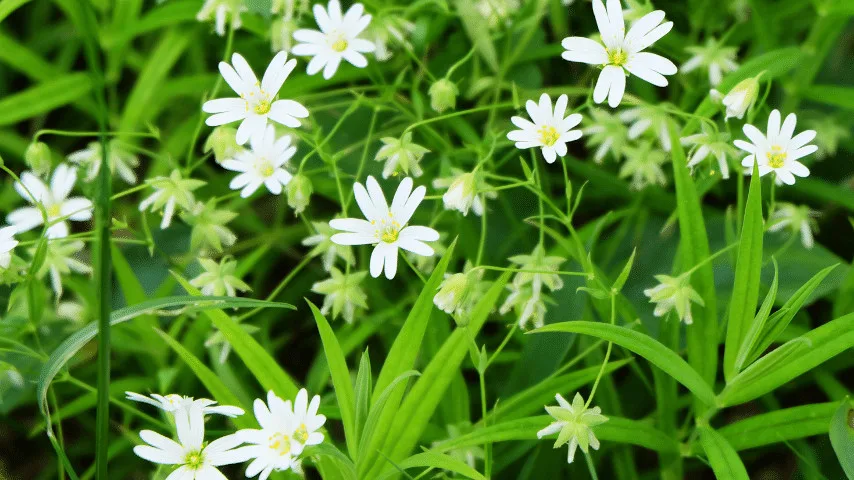
Another source of vitamin that can also be added to your enclosure is Chickweed.
They provide vitamins throughout the year. They produce flowers in colonies radiating elegance.
The binomial nomenclature of Chickweed includes:
- Scientific name: Stellaria media
- Family: Caryophyllaceae
- Temperature: 54° – 68°F (12° – 20°C)
- Soil: moist and fertile, rich in nitrogen
- pH: 6.0-6.8
- Environment: cool, moist, and shady areas
- Humidity: 45%
39. Emerald ripple
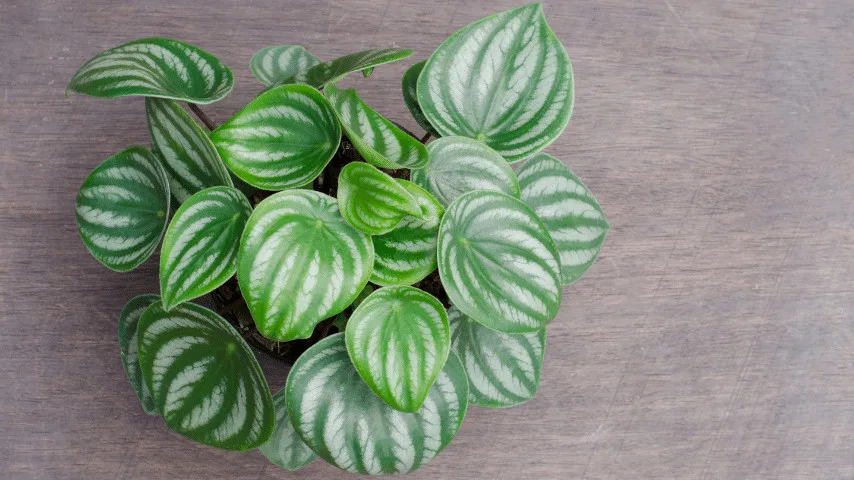
Another plant with heart-shaped leaves is an emerald ripple. Another name for emerald ripple is Peperomia Caperate.
If you want to add heart-shaped leaves to the enclosure, then this plant is ideal with its variety of colors, including green, dark red, and gray.
These plants are tiny and grow in clusters.
The binomial nomenclature of Emerald ripple includes:
- Scientific name: Peperomia caperata
- Family: Piperaceae
- Temperature: 60°-80°F (15.5°-26.7°C)
- Soil: well-aerated, quick-draining soil
- pH: 6.0– 6.6
- Environment: indirect sunlight
- Humidity: 40% – 50%
40. Firethorn horn
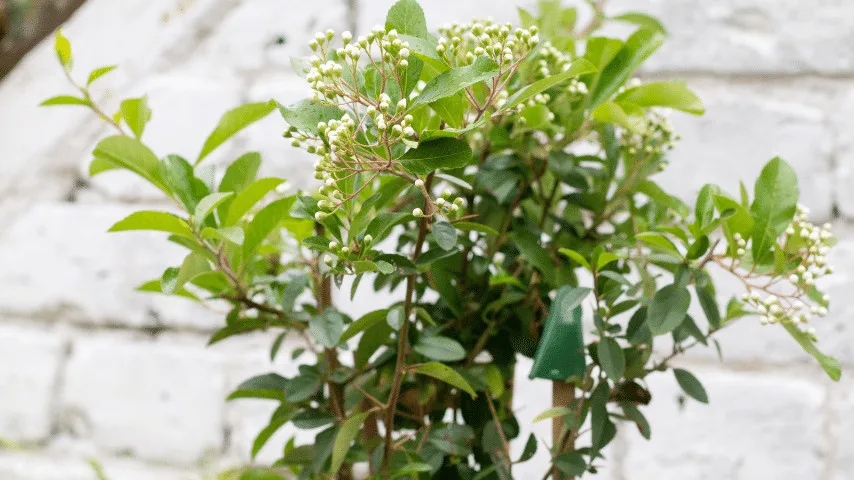
If you are interested in setting an evergreen plant in your chameleon enclosure, we suggest Firethorn.
It requires little effort to grow, is evergreen, and provides the benefits of different seasons.
It is wide and tall. You can use Firethorn to create a bed or border within your enclosure.
The binomial nomenclature of Firethorn includes:
- Scientific name: Pyracantha
- Family: rose
- Temperature: wide range of temperatures and climate
- Soil: Sandy, well-drained
- pH: Acidic, neutral, alkaline
- Environment: sunny, shady, or a partially sunny location
- Humidity: moderate

![40 Best Plants for Chameleons [2024]](https://plantophiles.com/wp-content/uploads/2022/05/Best-Plants-for-Chameleons-720x405.jpg.webp)
